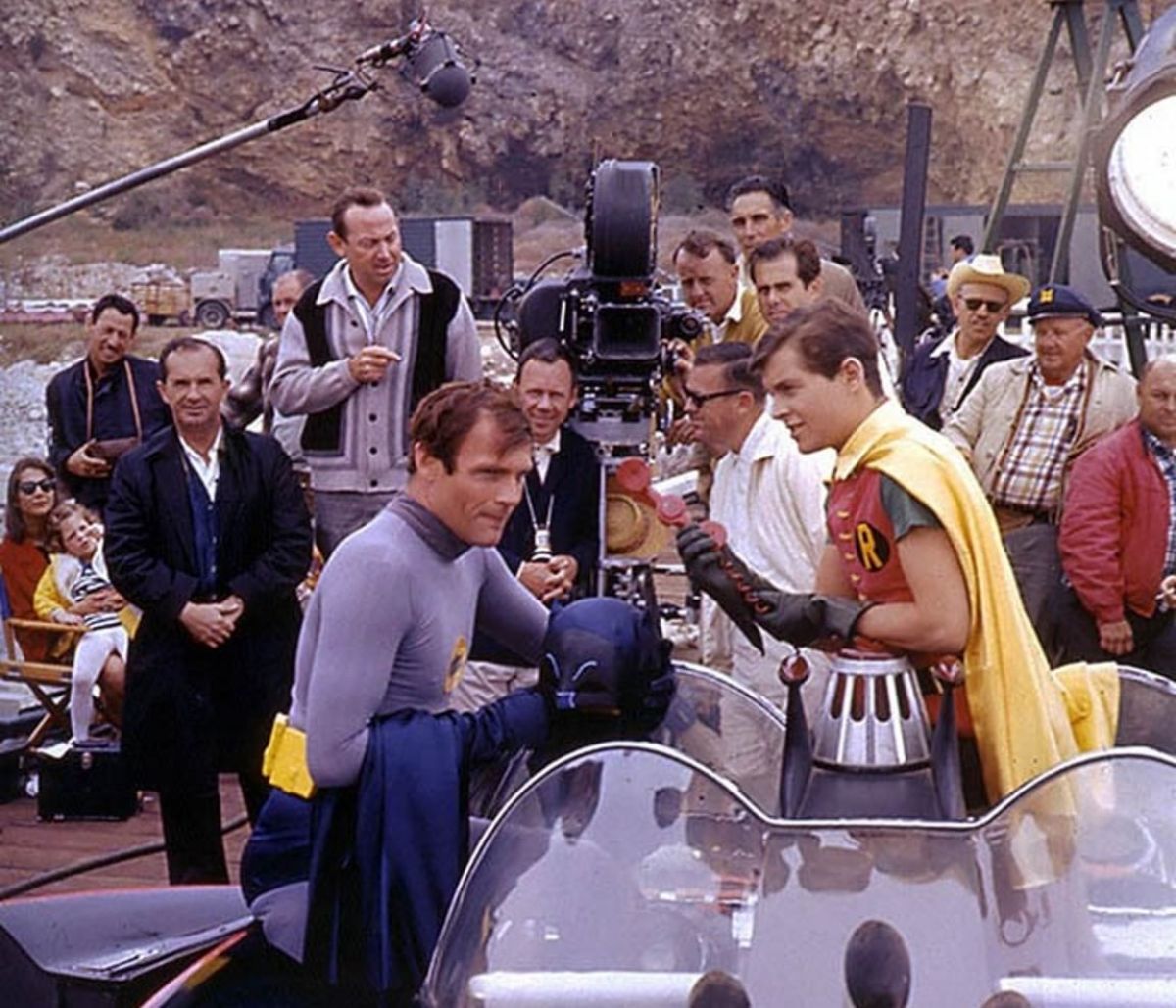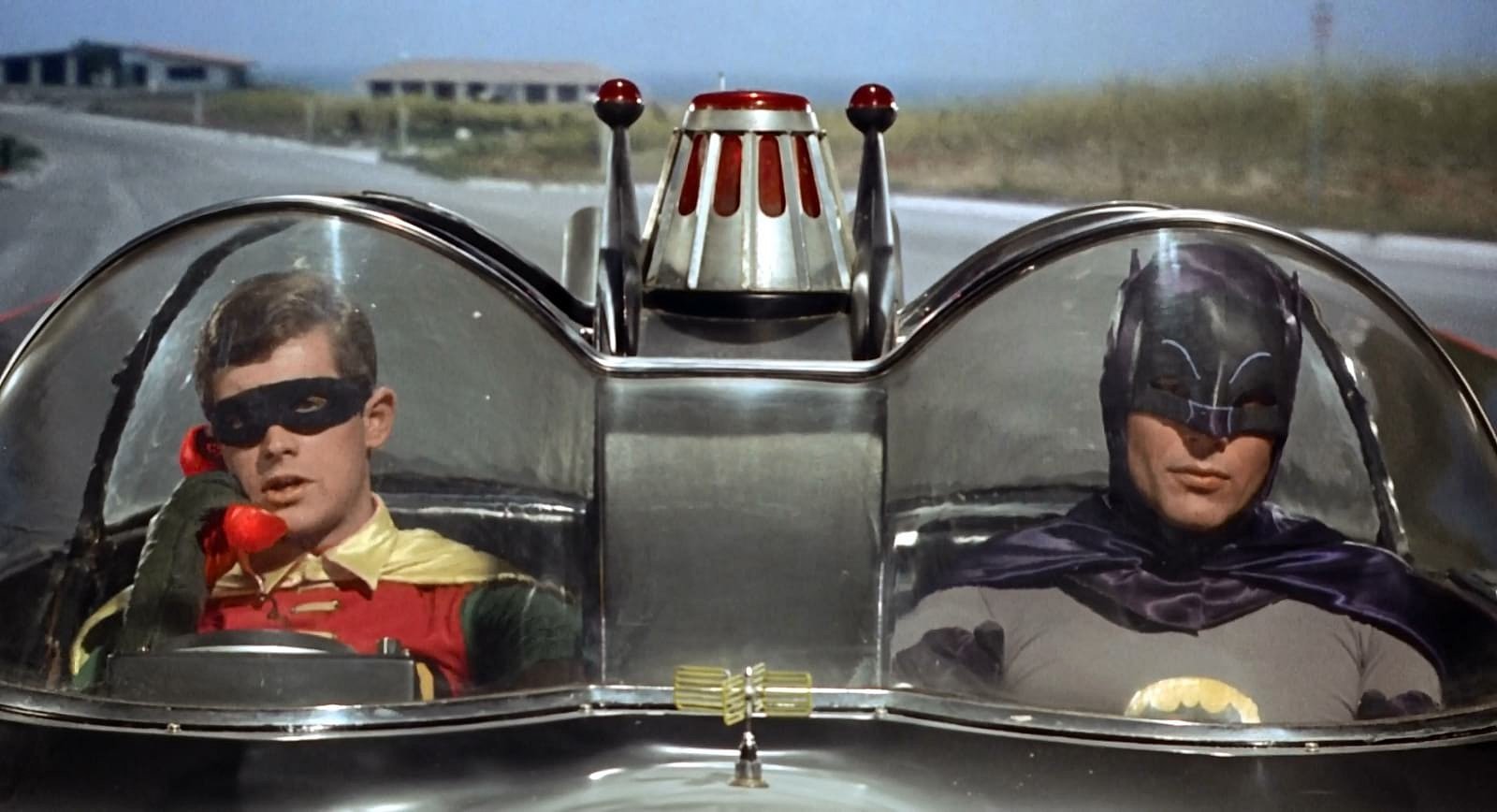
BAT-MATOGRAPHY or Capturing Batman on Film
What with Batmobiles, Batcopters, Batcycles and multi-colored Bat-finks, a cinematographer on America's most popular show could go bats — but like ZOWIE! It's fun!
By Howard Schwartz, ASC
Director of Photography
Photographing Batman — both the TV series and, now, the feature version — is a hectic experience. But in many ways it's a cameraman's dream because you're not tied to reality. You can pull out all the stops and do all the things camera-wise that you wouldn't dare do on a straight feature or TV series.
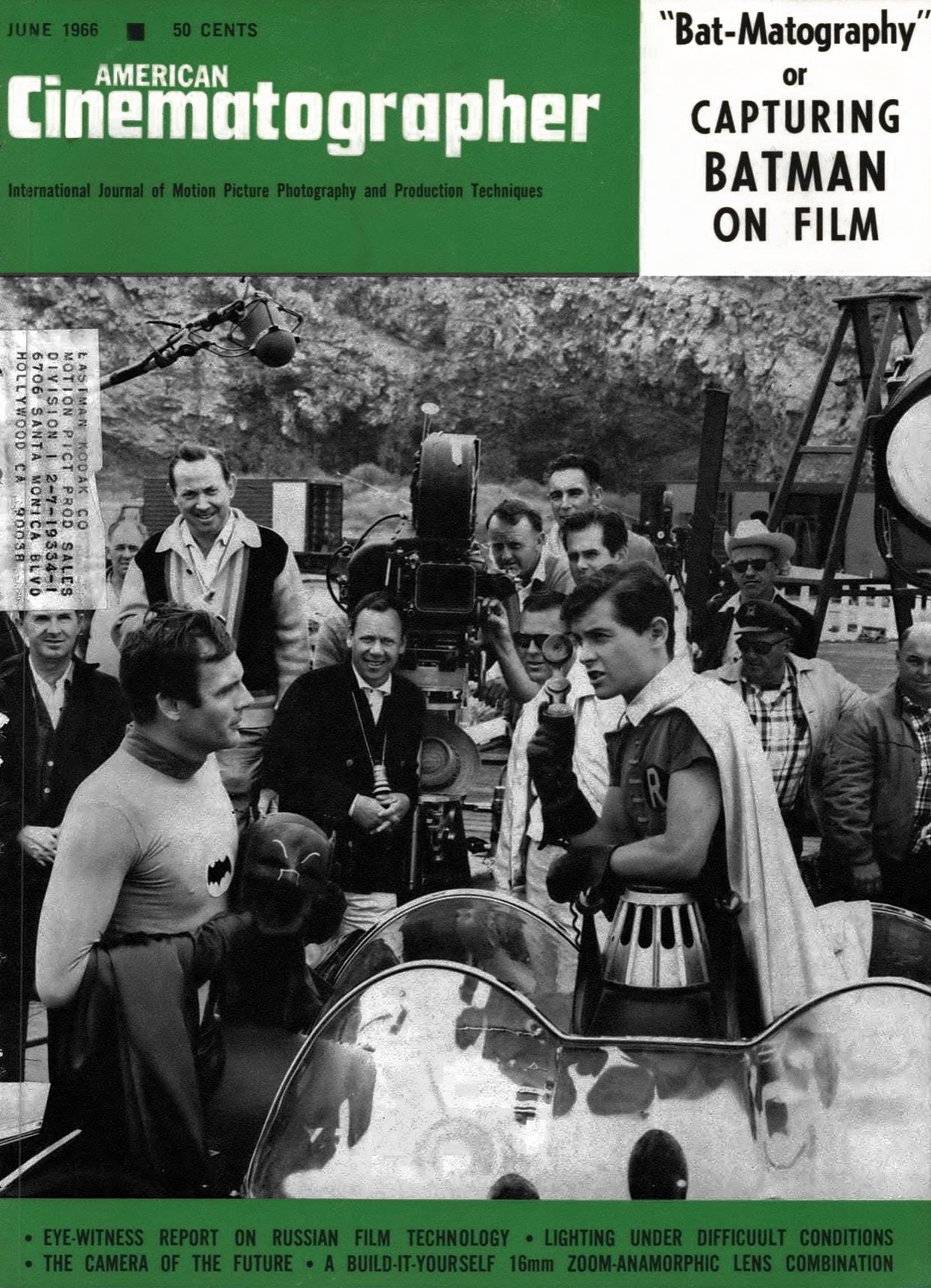
The style of Batman has been called "High Camp" and “Pop Art,” but to us who work on it the approach is highly specialized “comic strip.” We work to achieve this feeling through a combination of art direction, set decoration, wardrobe design, special effects and lighting. The overall style is the result of many small details. For example, even the pictures on the walls of the sets are mounted on colored mattes instead of neutral mattes, just as they are in comic strips. We use colored gelatins over our lamps frequently to splash color onto walls in the background of the scene. This gives the set extra depth and is visually more interesting.
Early in the production of the TV series, the producer, Howie Horwitz, said: “Take all the license you want.” And the American Broadcasting Company actually encouraged us to be bolder with our use of color. The ABC engineers feel that it's great for transmission if, wherever possible, we can break up a solid color wall with other colors. In the old days of strictly black-and-white TV, the networks asked for white reference areas on the walls. Now ABC, at least, likes to have a splash of color on the walls, We've gone even farther, color-wise, in this feature version of Batman and, as a result, we'll be adding more color to the sets for next season’s TV series. Even the straight sets, such as the interiors of Wayne Manor, are being perked up with more colorful furniture and wallpaper.
The way-out wardrobe worn in this show helps a lot, too. The outfits worn by Batman and Robin have a good bit of color in them, but the costumes worn by the villains (seen below) are really wild, mainly as the result of some inspired ideas contributed by Bill DiAngelo, our associate producer on the TV series. This makes things very exciting from the standpoint of color cinematography. It’s a great opportunity to do all the things with light and color that you couldn’t do otherwise. On a straight show you certainly couldn't go popping color in and out and tilting the camera like we do.
Another break is that out of the six or seven day schedule we have for the TV series, probably six of those days are spent working inside the sound stage where the cameraman has an opportunity to control the light. On an exterior show, you're always at the mercy of the elements.
For example, we’ve just spent two days in Santa Barbara shooting exteriors for this feature and we had to shoot in foggy weather practically all of the time. We didn’t plan it that way, but Bill Dozier and Charles B. Fitzsimons, our producers, are now going to take advantage of the bad weather and make it work for us by playing up the fog effects, adding fog horns to the soundtrack, etc. Even though the sky was overcast, the footage looks fine because the balance is right. Good balance in photography is the key to everything.
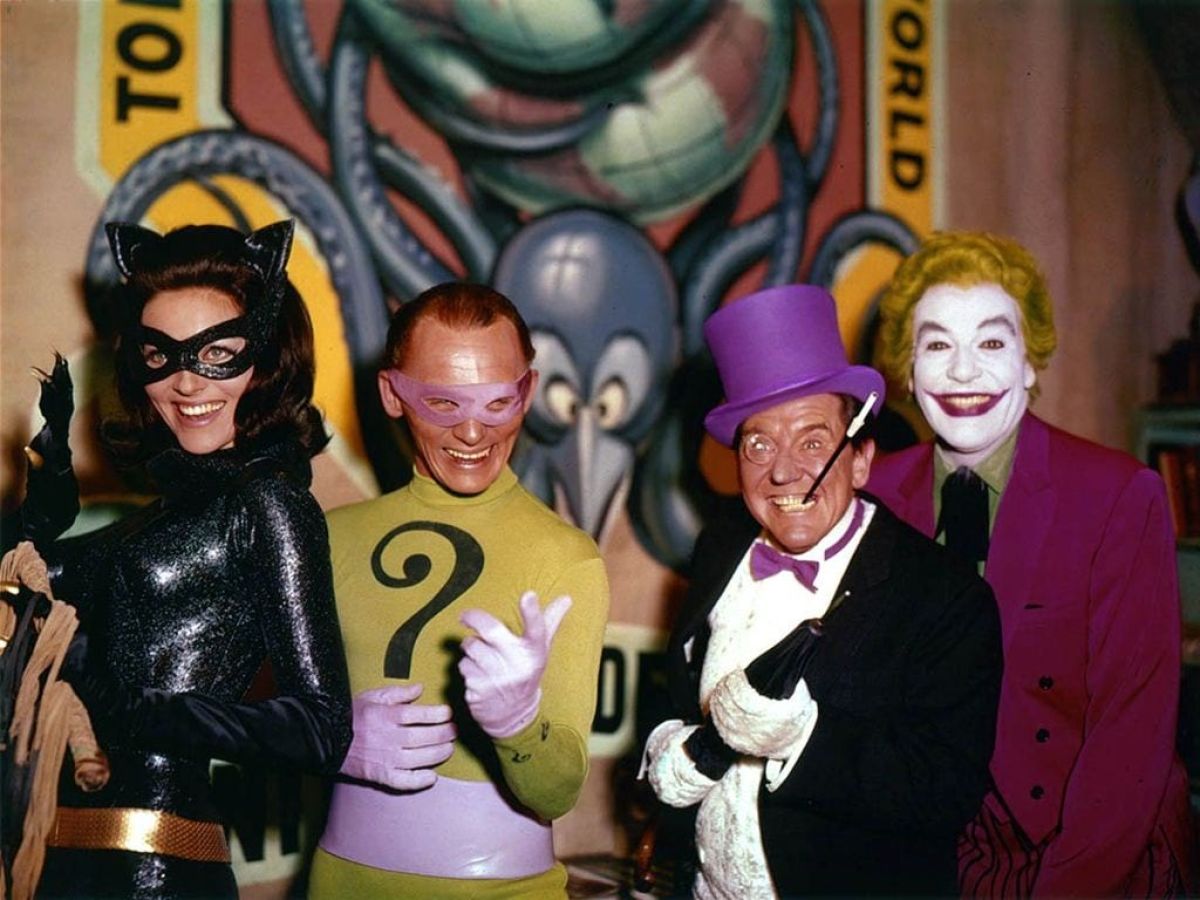
The sequence we shot in Santa Barbara is a wild one. Batman is loping around the pier trying to get rid of a bomb, but he keeps running into people, like a group of nuns and a Salvation Army Band. He streaks down the pier to throw the bomb over the side, but there’s a big boat going by and on the other side of the pier a bunch of ducks, so he says: “Some days you just can’t get rid of a bomb.”
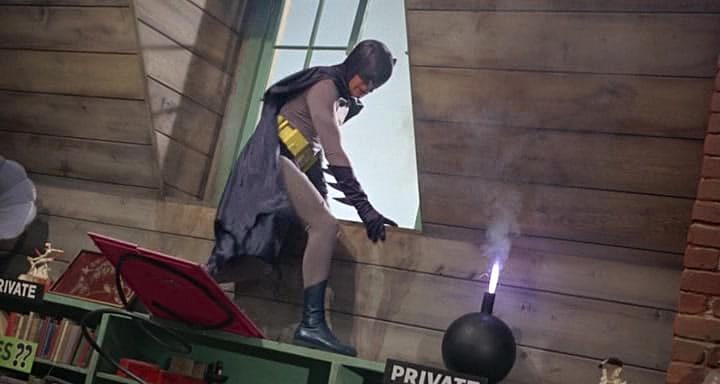
The big hazard of the Santa Barbara filming was the crowds. On the first morning the local TV station mobile crew came out and shot pictures of the production and showed them on their news broadcast that night. Immediately everybody in town knew we were there and the next day there were 30,000 people trying to storm the pier, including all the kids who were out of school for Easter vacation. Every policeman in town was there. Finally, the only way they could get the crowd to disperse was to dress the two stunt men up as Batman and Robin, put them in a taxi and let them beat their way through the crowd.
The overcast weather we had in Santa Barbara proved in another way what I’ve always maintained — that color is easier to shoot than black-and-white. Had we been shooting in black-and-white, there would have been almost no way to keep everything from going a flat gray. But in color, instead of depending upon planes of light for separation, the colors themselves create their own separation. Many production departments feel that color takes longer to shoot than black-and-white, but I don’t agree. You have to use larger lighting units, but it doesn’t take any longer.
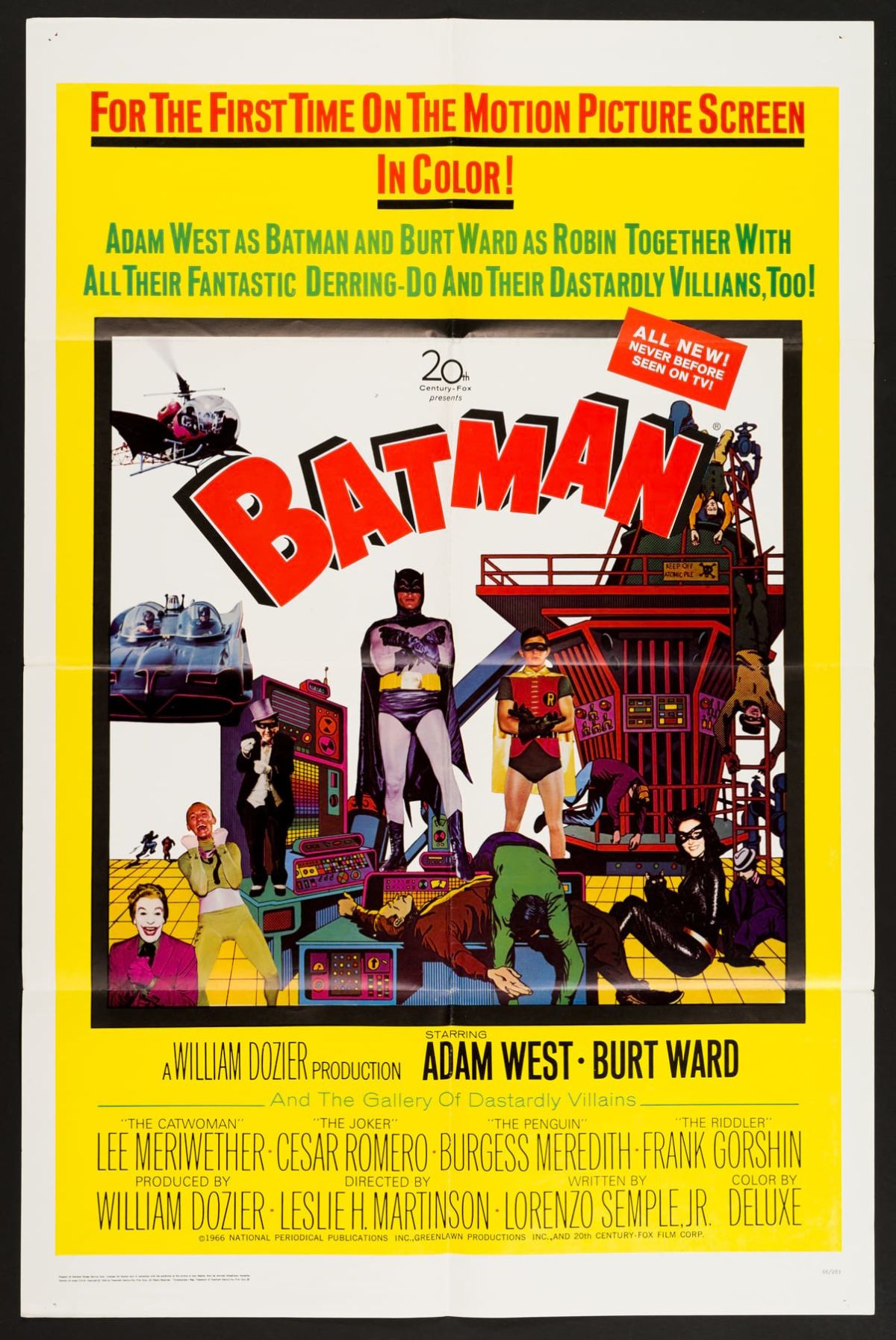
We are shooting the Batman feature, with all its tricks and gimmicks, on a 26-day schedule, which means that pre-preparation was most important. I spent two weeks with the director, Les Martinson, in preparation before we began shooting. I never left his side during that two weeks. I was present at all the discussions he had with everybody about his approach to the filming. We walked the sets and took a painter with us so that he could change colors, add colors, match colors and that sort of thing. Some of the sets were a bit flat color-wise, so we painted the tops of them down to a deeper tone of the same color. Usually you have a bit of a problem with the tops of your sets going hot anyway, because they’re closer to the lights. But in addition, painting the tops of the sets a deeper tone helped to break up the flat walls and give more separation to the sets.
During that two weeks of preparation, I walked the sets with the gaffer, Bill Neff, and head grip, Sam Bishop, also. We were able to put up parallels where they would be needed to pre-rig for arc breaks and other special lighting effects. I discussed with the director the many special effects called for in the script because most of these had to be checked out in advance with special effects expert L. B. “Bill” Abbott, so that we could all coordinate our efforts and shoot the action correctly for the effects. For example, in one scene we have a five-way split in which people are “popped” in and out of the scene. You can’t wait until you are on the stage to figure out how you’re going to shoot something like this.
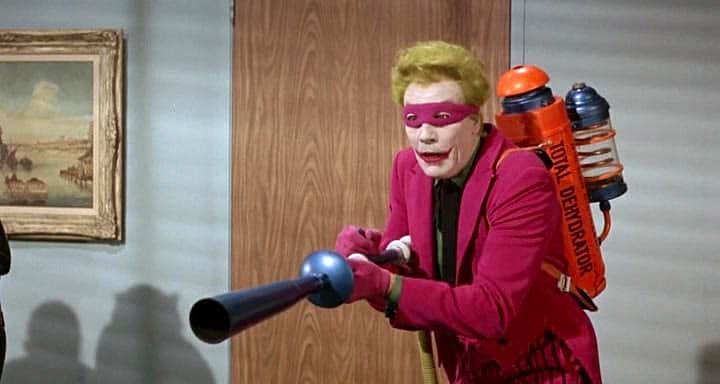
Even though we have only a 26-day schedule, we are after the same high professional quality you would expect in a feature taking many months to shoot. Here, again, preparation is the answer — and it has to be done in advance. If a cameraman has a chance to discuss things with the director at this stage the two of you have an opportunity to work out effects that are creative. Once you get on the set the director is mainly concerned with getting performances from his actors and you can’t very well take him aside and start exchanging ideas. So, I feel that preparation saves a great deal of time and money. The week or two that a cameraman gets to prepare a show is most important. On low-budget productions, producers sometimes feel they can cut corners by bringing the cameraman in only a day ahead, but it doesn’t work that way. It’s pennywise and pound-foolish.
One of the things we’ve tried to do camerawise on the Batman TV series is to convey the feeling to the audience that something exciting is about to happen. A method of doing this is to tilt the camera when we’re in the lair of one of the villains. We don’t overuse this effect, because we feel that it creates a certain atmosphere by using it only in the hideouts of the heavies. We’re shooting the feature in the 1.85:1 widescreen aspect ratio and I was curious as to how I would like the tilted-camera effect on the big screen. I’ve gotten accustomed to seeing it now and I really like it.
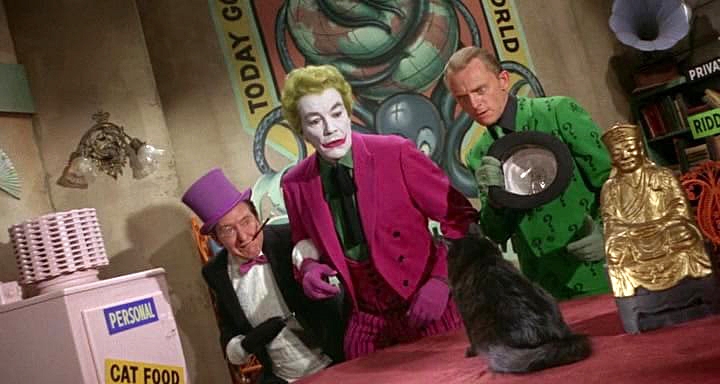
We try to use color in an exciting way and for that reason we use a great deal of colored light on the sets. For example, we did one TV episode with the Catwoman and, since we felt that amber was a “cat color” we played everything in her office and lair in ambers. We went to the greens for the Riddler because he wears a green outfit, and on the Penguin we used purples. These colors are produced, of course, by placing appropriate gelatins over the lamps. Naturally we keep the colored light off the faces, except for extreme effects where somebody will turn on a red light or green light or something of the sort. We also use a lot of MT-2’s, warm-colored gelatins on the lamps up high in the background. The sets themselves are colorful and offbeat because the art director, Serge Krizman, is very imaginative.
Actually, Batman is a pretty exciting show in color and, since only about 10 percent of the TV audience in this country have color receivers, we feel the feature will give many TV viewers a chance to see Batman in color for the first time.
The way-out props and contraptions used in the show are very effective but they add up to a sizable photographic problem, too. They’re all specially designed and tremendously involved. You can’t just skip over them photographically, because the audience wants to see what’s happening. For example, in the Batman feature, the villains dehydrate the members of the United World Security Council so that they are nothing but dust, and by mistake the dust gets all mixed together. Batman and Robin take the dust back to the Batcave and whirl it in a tremendous centrifuge to separate the people from each other. Then Batman rehydrates them. Well, this “rehydrater” is a complicated gadget and you’ve got to light it and photograph it so that the fluids can be seen bubbling through the tubes — all of which takes time.
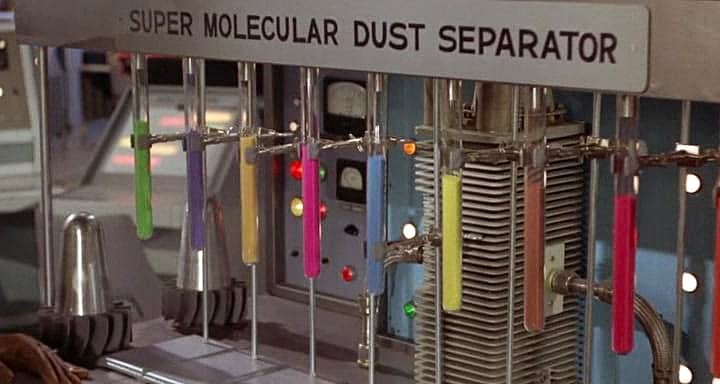
In the feature, in addition to the familiar Batmobile, we introduce several new pieces of equipment, such as the Batcycle, the Batboat, the Batcopter and a whole catalog of exotic weapons and gadgets.
The Batcopter is actually a converted three-place Bell helicopter equipped with bat-type wings, each 12 feet long, plus additional Batman custom equipment. It was built by the National Helicopter Service in Van Nuys, California, and had to pass rigid tests by the Federal Aviation Agency before getting an airworthiness certificate. The batwings cut down the rotor power about 50 percent, but there’s still enough reserve thrust left for some pretty fancy maneuvers.
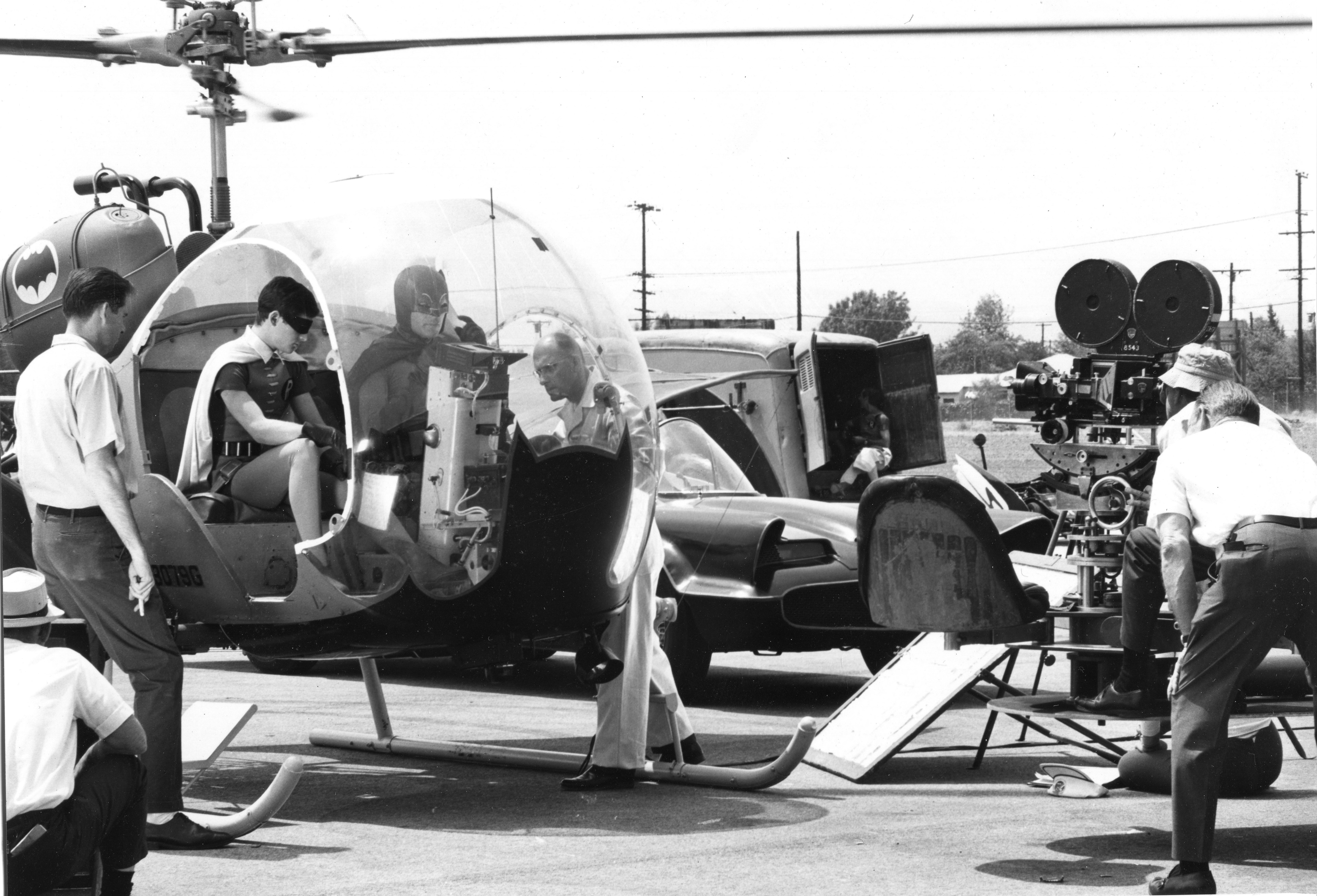
The Batboat was built to studio specifications in Texas and can go 90 miles an hour. Most of the scenes involving the Batboat (including the one where the boat disappears) were shot from a helicopter with Nelson Tyler doing the photography. That’s a great camera mount he has. Ray Kellogg was the second-unit director on these tricky sequences and he did a beautiful job. His previous experience in special photographic effects certainly aided him in this work.
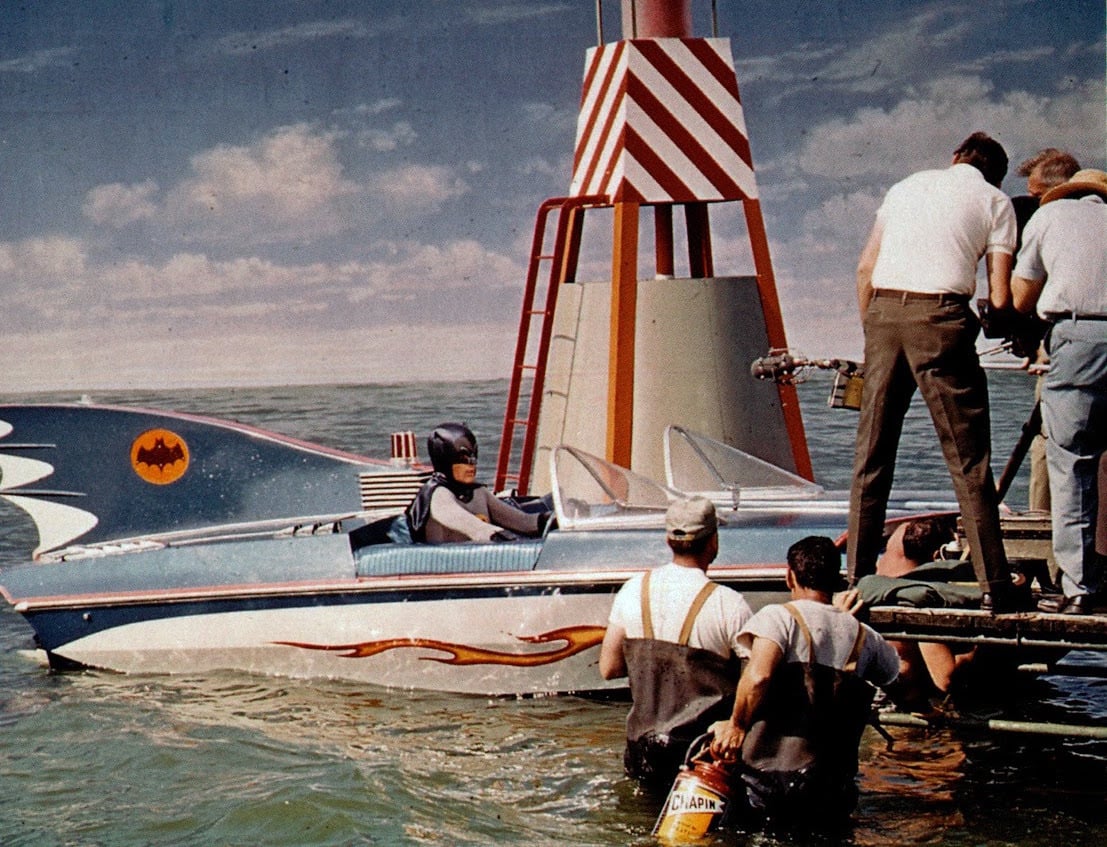
Then, of course, we have the Batclimb, which is familiar to TV audiences. We get this effect with a section of wall set that lies over on its side at a slight incline. We tip the camera so that it is parallel to the wall and use wires to get the capes to stand out as they would during an actual climb.
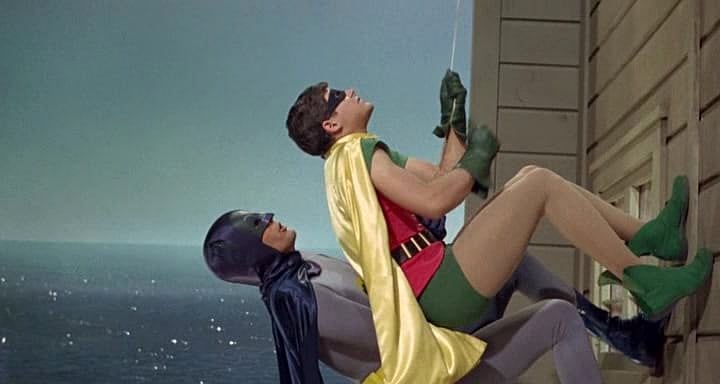
There’s a great deal of wire work in this show, with Batman and Robin doing some rather incredible things. It’s a problem, of course, to conceal the wires. For example, in one sequence Batman and Robin have to arch their backs and work their way up a chimney back-to-back. They had to have wires to help them up, but instead of the usual fine #25 piano wire, they were rigged with ⅛-inch cable. The audience isn’t supposed to see it, but that’s a pretty thick cable not to see. The only way to conceal it was to throw a narrow shadow right up the center of the scene, which was rather tricky to do, since the two characters were going up the chimney back-to-back with their heads only a few inches apart. I’m happy to say it worked out fine, though.
There are, of course, a great many fights in Batman, both on TV and in the feature. However, we have to be extra careful with these fights in order to make provision for later superimposure of words like “Zap,” “Pow” and “Wham” that have become a recognized feature of Batman fights. One thing we try to do wherever possible is to stage the fights in a situation which can be played in low key. In this way we can bring the doubles practically right up into the camera. It’s a tip for amateur moviemakers to remember that if they can let the faces fall off on the camera side they have a better chance of working close to the doubles and expediting fight sequences.
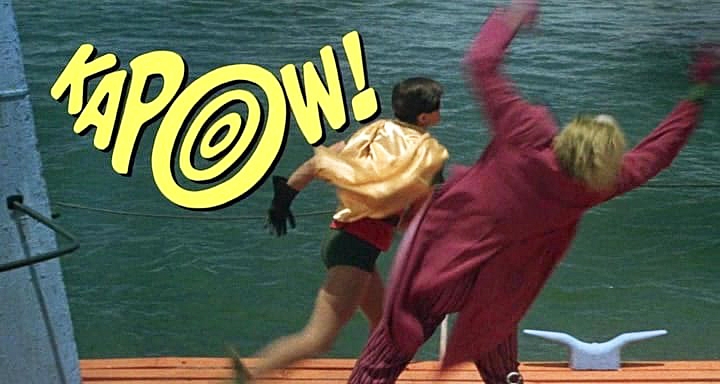
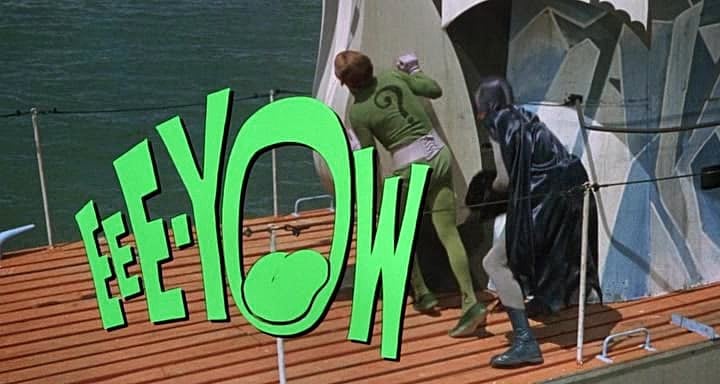
In our fight sequences, the masks help, but otherwise they create a constant lighting problem. We have to be careful in keying our lights to make sure we have enough eye light to get into those holes in the masks. The simple way would be to use an eyelight on the camera, but I prefer to set a light from the floor because an eye-light, if you're not extremely careful, can flatten out your lighting effect when you move in close.
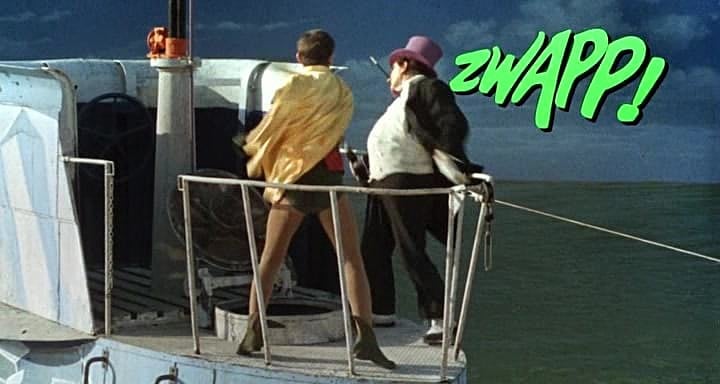
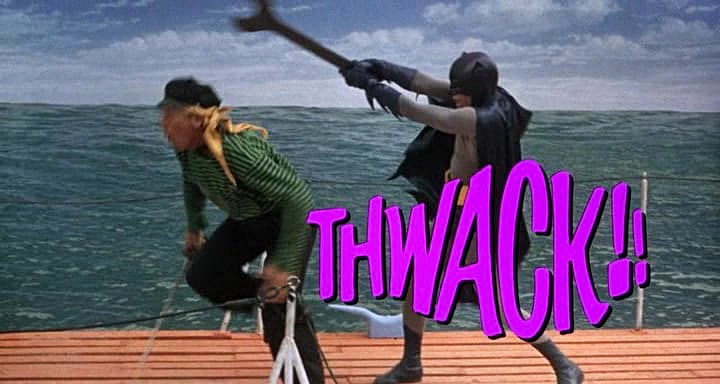
In order to stay with our tight 26-day schedule on the Batman feature, director Les Martinson and I have had to coordinate our activities so that we can save lighting time between setups. Ordinarily, on a big feature where you have plenty of time, you actually knock out all your lights when you’ve shot a set-up and start all over again from scratch on the next one. On this feature, the director has tried to stage his action so that we can simply move in or out with the camera, using essentially the same lighting with perhaps the addition of one or two units. This has saved a great deal of time while still maintaining good technical quality.
On the Batman TV series various directors are used and the amount of camera movement utilized depends largely upon the style of the particular director. It’s up to the cinematographer to adapt his technique to the style of the director. The style of the feature is such that it calls more for quick cuts than a great deal of camera movement although, of course, we have dollied quite a bit to follow action. I always try to key my lights far enough around on the set so that if the director suddenly decides he wants a dolly shot there’s not a great deal of time lost in lighting for it. Actually, it’s no problem for an experienced cameraman to light for camera movement as long as he isn’t forced to light flat. The only time a cameraman has difficulties with the moving camera is when he’s using flat lighting. Then he has to fight camera shadows.
In order to accentuate the weird style of Batman, we use the 18mm wide-angle lens quite a bit. We even used a 9.5mm lens a couple of times. In one sequence, for example, Robin is supposed to be riding the clapper of a huge bell that is swinging back and forth. We built this prop on the stage but were unable to get back far enough to get it all in. So we put a 9.5mm lens on the Arriflex and were able to get a full shot. There was no objectionable distortion in the scene because we were not that close to the subject.
The lighting in Batman is kept relatively simple and as dramatic as possible in keeping with the story and the gags. In general, I feel that simplified lighting is an asset for several reasons. Firstly, the more units you use the more you tend to wash out the shadows you’re creating — and you want the shadows in color, just as you do in black-and-white. You fill them more in color, of course, unless you’re creating an effect.
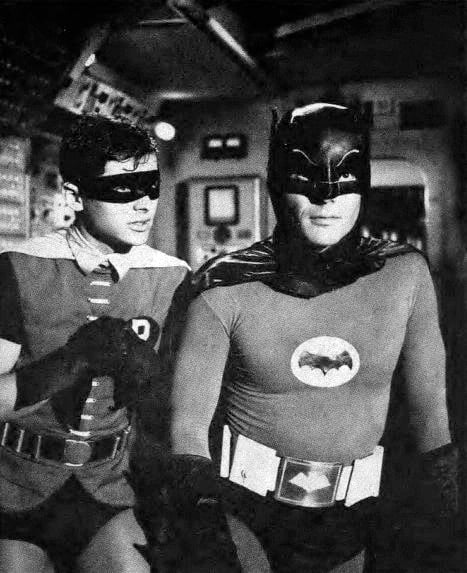
However, the fewer lighting units you use the more care you have to take in placing them. You can’t formalize it to a definite system because no two shots are ever the same, but once you get used to working with fewer units (and bigger ones in color, of course) there’s really not too much of a trick to it.
The very nature of the gags in Batman demands that we do considerable undercranking, occasional overcranking and a hit of reverse action. For example, every time the Batmobile takes off it jets out at 12 frames per second to exaggerate the speed. A scene showing a tire inflating suddenly was under-cranked and reversed. The same combination of under-cranking and reverse action was used in a scene where Robin is shown catching the Batrope in his teeth as he is falling from a skyscraper. Although the reverse action part of these scenes could be done in the camera by using a reverse load, it is much simpler to have it done later on an optical printer.
In shooting our night scenes we shoot either day-for-night, or night-for-night, depending upon the circumstance. In one case we started on a sequence day-for-night and continued right on shooting until it was night-for-night, then shot matching close shots on the sound stage. It all balanced out surprisingly well.
Like most cinematographers, I prefer shooting night-for-night, not only because it is more realistic, but because in photographing day-for-night you’re at the mercy of the weather and the location the director chooses for staging his action. However, shooting night-for-night in the summer is a tough situation. With daylight savings time, you can’t start shooting until 9 p.m. and that runs everything pretty late.
We are trying to preserve in the feature the same Batman flavor we have in the TV series, so there isn’t too much difference in the camera approach. There are fewer closeups and theoretically we could run more of the action in master scenes. But there are so many quick cuts and cutaways to follow the busy action that although we shoot only three to four pages of script a day on the feature as compared to nine on the TV series, we are working just as hard. The hectic schedule of TV is a good training ground for this kind of feature, but you have to be more careful because certain things that would get by on TV won’t pass inspection on the big screen.
Ralph Woolsey, ASC was the original director of photography on the Batman TV series and he did the first several shows. Jack A. Marta, ASC did three or four and now alternates with me when they have two units shooting. I’ve done eight or nine of the episodes, plus the feature version.
Photographing Batman is a lot of hard work, but it’s also a stimulating challenge and, by its very nature, a lot of fun. There are problems, to be sure, but I think we create most of our own problems. It’s a matter of mental attitude. I feel that if a cameraman has the equipment to work with, a good crew and a smooth rapport with the director, even though he may not have enough time, he can still get a good quality of photography and have a good time doing it.
The people involved with Batman are a marvelous bunch to work with. They want a good job and they give you the utmost cooperation and absolute creative freedom to do your part of it.
All this and Bat-money, too
